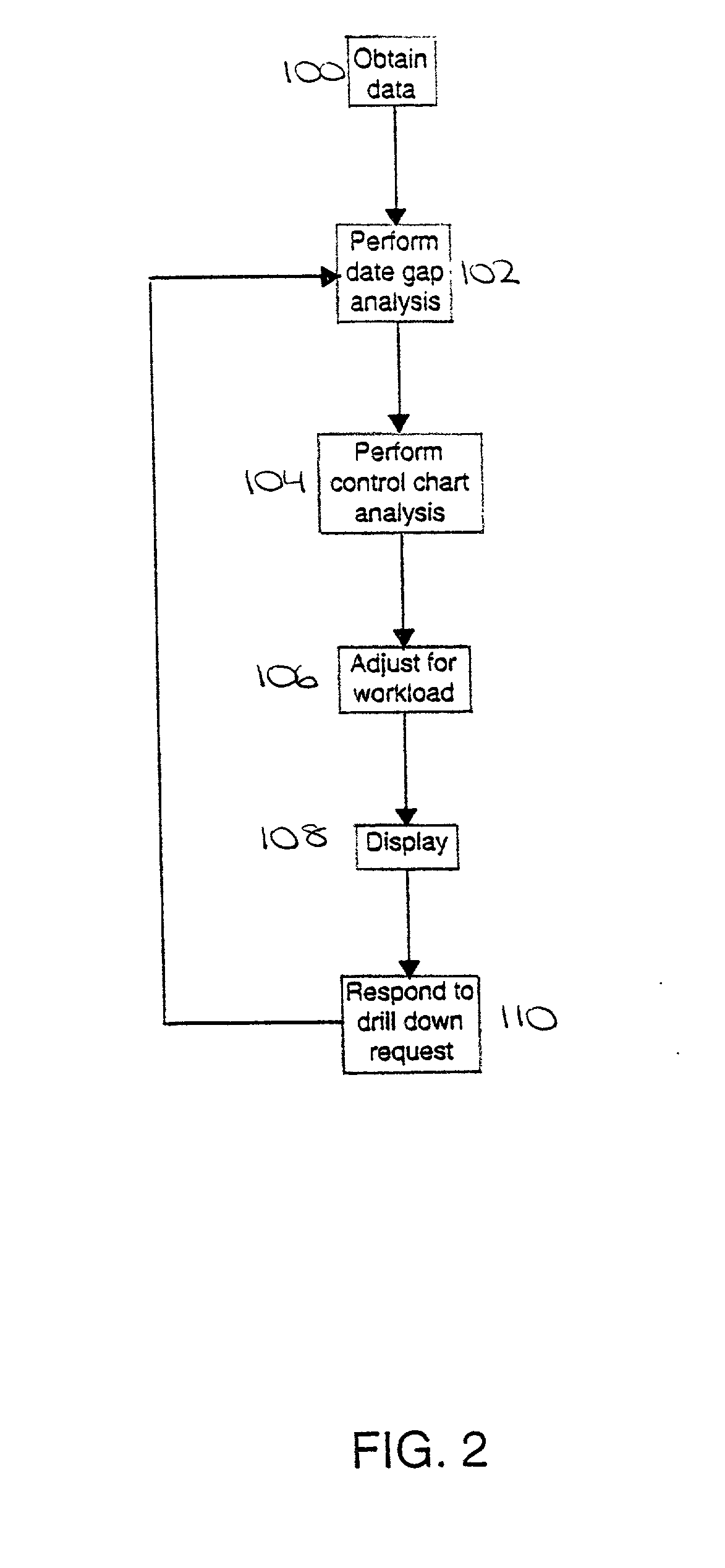System and method for monitoring and analyzing data trends of interest within an organization
a technology of data trends and systems, applied in office automation, resources, marketing, etc., can solve the problems of inability to integrate data from different but related sources, and inability to integrate the various systems and data to uncover relationships
- Summary
- Abstract
- Description
- Claims
- Application Information
AI Technical Summary
Benefits of technology
Problems solved by technology
Method used
Image
Examples
Embodiment Construction
, below.
BRIEF DESCRIPTION OF THE DRAWING FIGURES
[0019] A preferred embodiment of the present invention is described in detail below with reference to the attached drawing figures, wherein:
[0020] FIG. 1 is a block diagram of computer hardware and code segments which may be used to implement a preferred embodiment of the present invention.
[0021] FIG. 2 is a flow diagram broadly depicting the steps of a preferred embodiment of the method of the present invention.
[0022] FIG. 3 is a conventional X-bar control chart showing a range of plotted data moving about a centerline and bounded, for the most part by, control limits.
[0023] FIG. 4 is control chart resulting from a preferred embodiment of the present invention.
DETAILED DESCRIPTION OF A PREFERRED EMBODIMENT
[0024] FIG. 1 illustrates a preferred embodiment of a computer-based system 10 for monitoring and analyzing workplace illnesses and injuries. Though described and illustrated in terms of this specific application, the present inventi...
PUM
 Login to View More
Login to View More Abstract
Description
Claims
Application Information
 Login to View More
Login to View More - R&D
- Intellectual Property
- Life Sciences
- Materials
- Tech Scout
- Unparalleled Data Quality
- Higher Quality Content
- 60% Fewer Hallucinations
Browse by: Latest US Patents, China's latest patents, Technical Efficacy Thesaurus, Application Domain, Technology Topic, Popular Technical Reports.
© 2025 PatSnap. All rights reserved.Legal|Privacy policy|Modern Slavery Act Transparency Statement|Sitemap|About US| Contact US: help@patsnap.com



